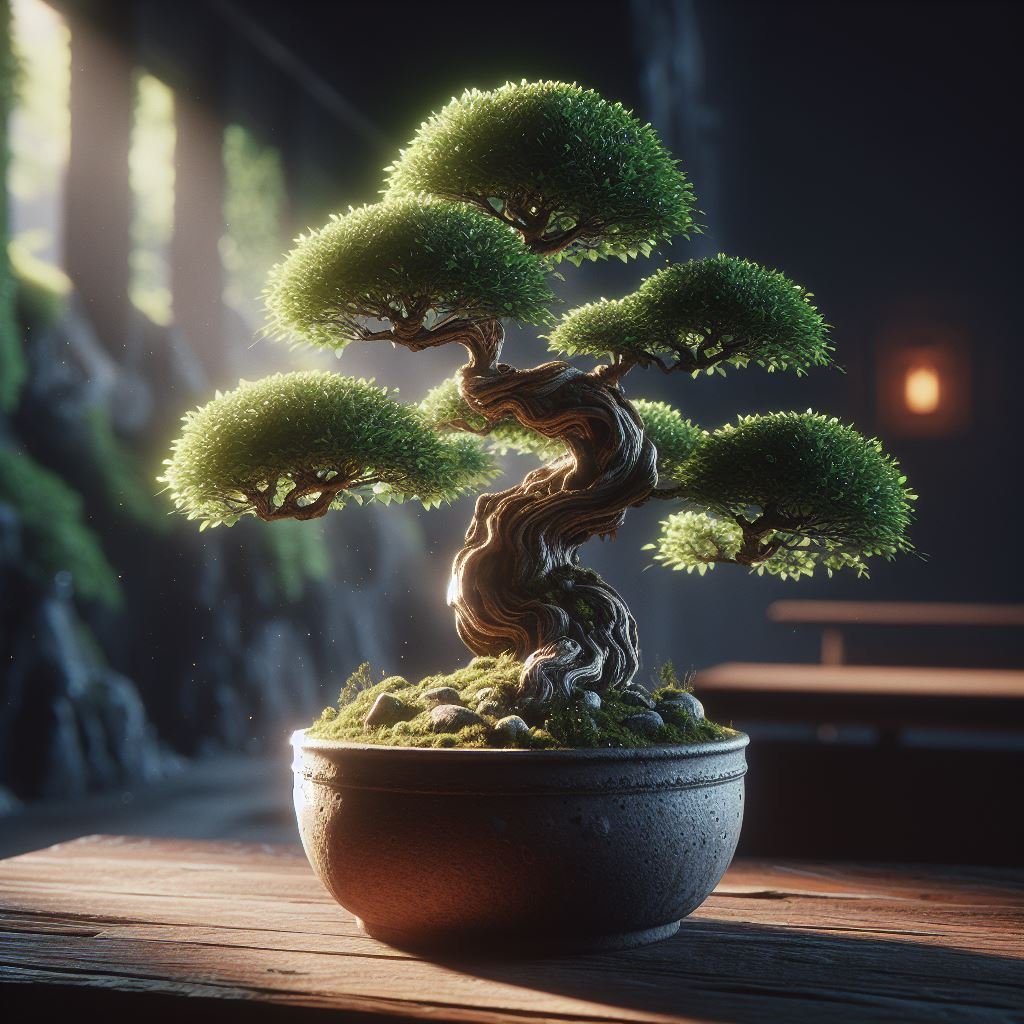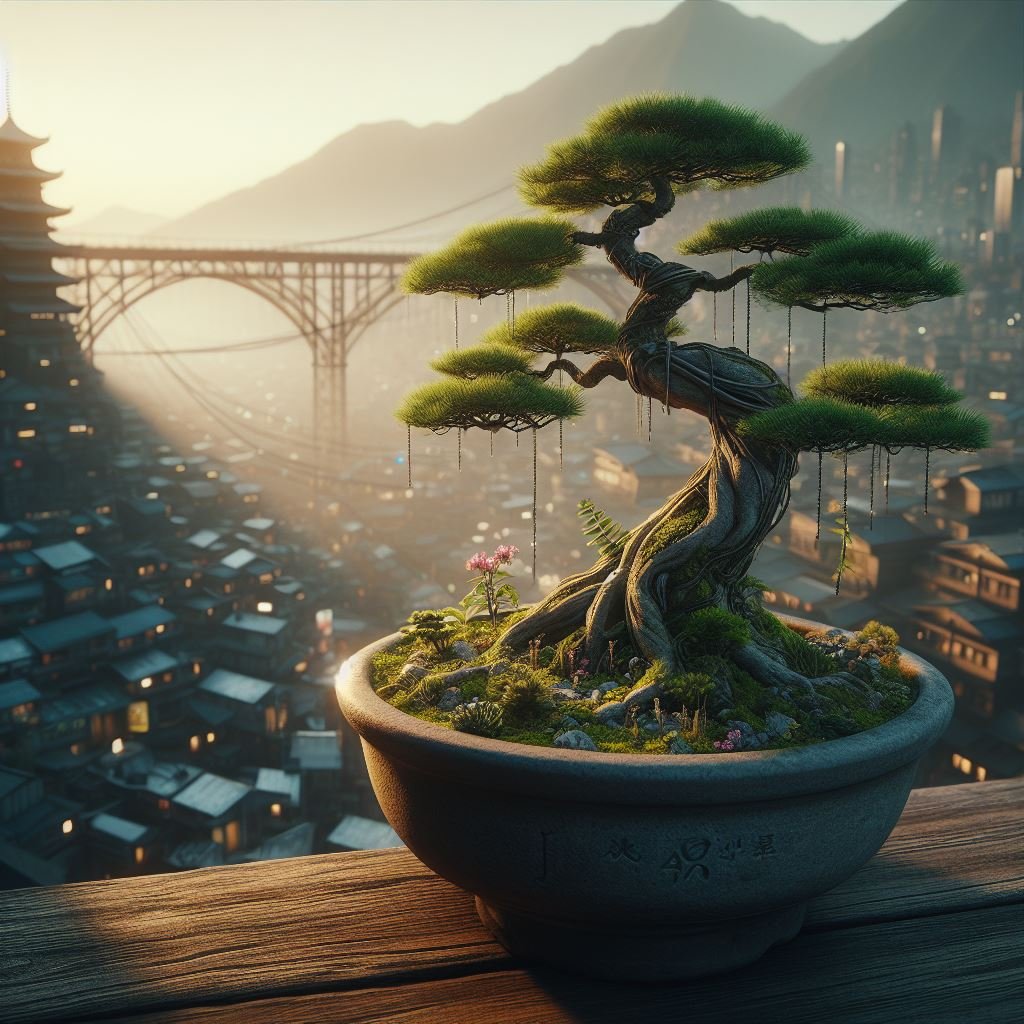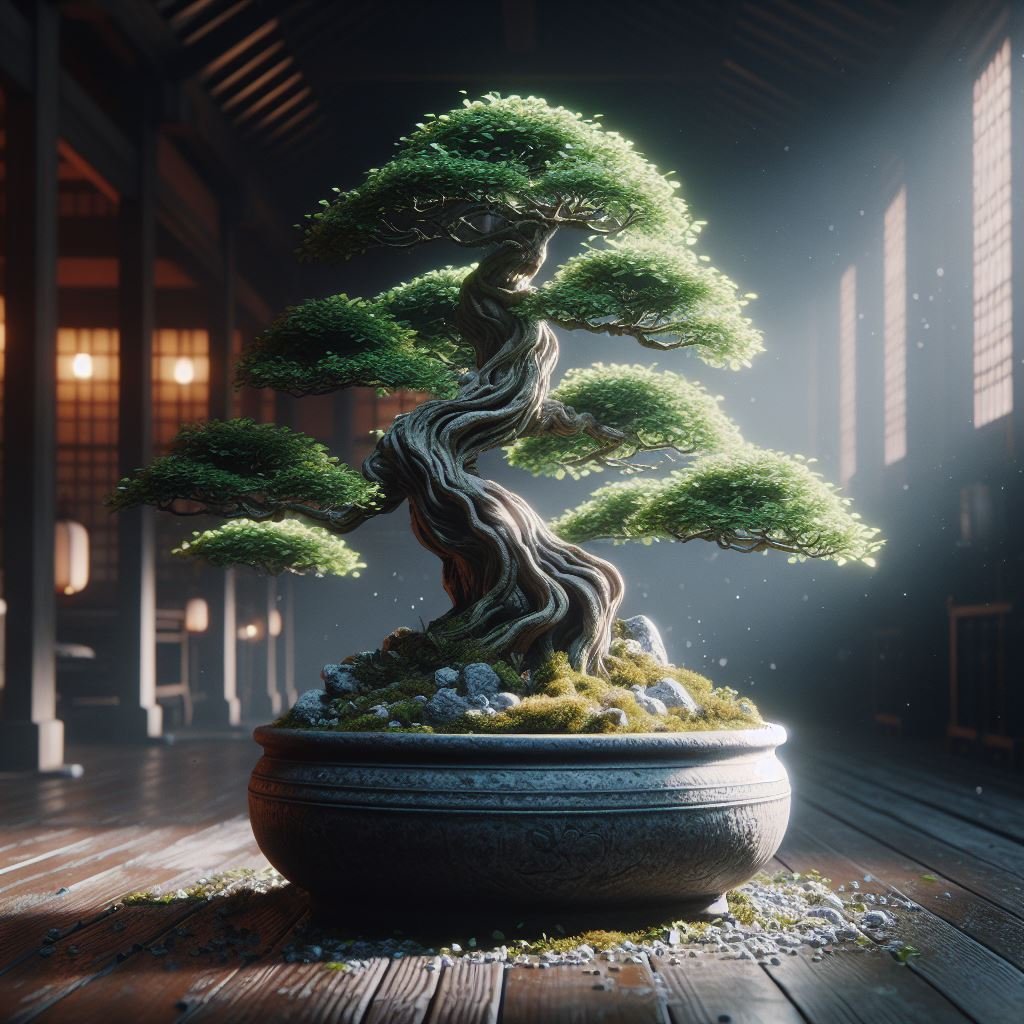Dive into the world of Literati Bonsai, also known as Bunjin Bonsai, a distinctive and artistic approach to the ancient art of Bonsai. This style breaks away from the traditional norms, introducing a free-form design that mirrors abstract expressionism. Despite its familiarity amongst enthusiasts, the full depth and beauty of Bunjin Bonsai remain a mystery to many. In this article, we aim to demystify this elegant form of Bonsai, exploring its unique characteristics, historical roots, and the techniques used to create these miniature masterpieces.
Introduction

Definition of Literati Bonsai
Literati Bonsai, also known as Bunjin Bonsai, is a unique and poetic style of bonsai art. It’s characterized by its tall, slender trunk which often contorts and twists, embodying the spirit of freedom and natural growth. Unlike the more structured styles, Literati Bonsai is inspired by the natural elements, often resembling trees that have weathered harsh conditions. The result is a tree that seems to tell a story, a testament to survival and resilience.
Brief History of Literati Bonsai
The Literati Bonsai style has deep roots in Chinese culture, where it was originally developed. The term “Literati” refers to the class of scholarly elites in ancient China who were deeply immersed in the arts, literature, music, and calligraphy. They were drawn to the unconventional beauty of trees growing in harsh mountainous regions and began to replicate these forms in their bonsai art.
This style was later introduced to Japan, where it was further refined and evolved into the Bunjin Bonsai we know today. The style continues to be celebrated for its ability to break away from rigid norms and express a sense of poetic freedom and elegance.
The Artistic Approach to Literati Bonsai

Understanding the Poetic Style
The Literati Bonsai style is often described as “poetic” due to its distinct visual language that goes beyond the physical form to evoke an emotional response. It’s characterized by a tall, slender trunk that twists and bends, defying the traditional rules of bonsai symmetry and balance.
The tree is typically allowed to grow freely, creating an image of naturalness and spontaneity. This style seeks to capture the spirit of the tree, its struggles, and its triumphs, much like a poem captures the essence of human emotions.
How it Differs from Other Bonsai Styles
Unlike other bonsai styles that emphasize symmetry, balance, and proportion, Bunjin Bonsai embraces imperfection and asymmetry. While other styles may prune and shape the tree to fit a specific form, Literati Bonsai allows the tree to grow naturally, guided only by subtle interventions.
The result is a tree that appears wild and unrestrained, yet still possesses a certain aesthetic elegance. This stark contrast to other bonsai styles is what makes Bunjin Bonsai so unique and fascinating.
The Symbolism Behind Literati Bonsai
Literati Bonsai is rich in symbolism, often used to express themes of endurance, resilience, and the beauty of imperfection. The twisted and contorted trunk symbolizes the struggles and hardships faced by the tree, while its ability to flourish despite these challenges represents triumph over adversity.
‘This style of bonsai is also associated with the ideals of the literati class in ancient China, who valued individualism, creativity, and a deep connection with nature. Thus, each Literati Bonsai is not just a miniature tree, but a work of art that tells a compelling story.
Creating a Literati Bonsai
Choosing the Right Tree for Literati Style
Choosing the right tree for the Literati style is crucial. Species that have flexible trunks and can tolerate heavy pruning are ideal. Juniper, Pine, and Cypress are popular choices due to their flexibility and natural tendency to grow in rugged conditions. However, other types of trees can also be used, as long as they possess the ability to adapt to the Literati style’s unique demands.
Techniques for Crafting a Literati Bonsai
The creation of a Literati Bonsai involves several techniques that help achieve its characteristic appearance. The first step is usually to wire the trunk and branches to guide their growth into the desired form. This process, known as wiring, allows the artist to create the tree’s unique twists and bends.
Pruning is also essential to maintain the tree’s slender form and enhance its overall aesthetic appeal. It’s important to remember that while these techniques are used to guide the tree’s development, the goal is not to control every aspect but to let nature take its course, creating a tree that looks as natural as possible.
Long-term Care and Progression
Taking care of a Literati Bonsai requires patience and dedication. Regular watering, feeding, and pruning are necessary to keep the tree healthy and maintain its shape. The tree should also be regularly checked for pests and diseases, as these could hinder its growth and affect its overall health.
Over time, as the tree matures, it’s important to continuously adjust the wiring and pruning methods to support its development. The progression of a Bunjin Bonsai is a slow and continuous process, much like the writing of a poem, each day adding a new line to its story.
Inspiring Examples of Literati Bonsai

Exploring Various Literati Bonsai Designs
There are numerous examples of Literati Bonsai that can serve as inspiration for bonsai enthusiasts. For instance, George Cheung’s Pinterest board titled “Bonsai literati” showcases a wide array of bonsai trees crafted in the Literati style, highlighting the diversity and creative possibilities within this art form.
In another example, the Albuquerque Bonsai Club’s article titled “Literati – The Poetic Style” provides an in-depth exploration of the Literati approach in bonsai art. Despite being difficult to describe due to its subjective nature, the Literati style is beautifully represented through various examples in the article.
Another interesting source of inspiration can be found on the website Bonsai Mary, where the Bunjin Bonsai, another term for Literati Bonsai, is explored. The article emphasizes the natural traits and abstract aesthetic of this bonsai style, showcasing the irregular shapes that embody the spirit of literary men or literati.
Case Study: Red Maple Saplings in Literati Style
To illustrate how one might create a Literati Bonsai, let’s consider a hypothetical case study using Red Maple saplings. Known for their vibrant fall foliage and adaptability, Red Maples could be an ideal choice for a Literati Bonsai.
The first step would be to wire the sapling’s trunk, encouraging it to grow in a sinuous, twisting manner. Over time, the artist would gradually adjust the wiring, allowing the tree to grow while maintaining control over its overall shape.
Next, the artist would prune the branches and leaves to maintain the tree’s slender form and enhance its aesthetic appeal. This process would be repeated continually over several years, with the tree slowly taking on the characteristic appearance of a Literati Bonsai.
Finally, the artist would need to provide regular care for the tree, including watering, feeding, and checking for pests and diseases. By maintaining the health and vitality of the tree, the artist ensures that the Red Maple Bonsai continues to grow and thrive, embodying the spirit of the Literati style.
In conclusion, creating a Literati Bonsai involves a blend of artistic vision, technical skill, and patient nurturing. Whether you’re a seasoned bonsai artist or a beginner, exploring this unique style can offer a new perspective on the art of bonsai.
Footnotes
- Pinterest – Bonsai literati ↩
- Albuquerque Bonsai Club – Literati Bonsai ↩
- Bonsai Mary – Bunjin Bonsai ↩
Conclusion
The Literati Bonsai, with its impressions of tall, slender trees and minimal foliage, has left a significant mark on the world of contemporary art. This influence is evident in various artistic fields beyond bonsai, including painting and sculpture. In particular, the Literati style’s emphasis on naturalness, individuality, and the beauty of imperfection resonates with many contemporary artists.
Famed bonsai master John Naka once described the Literati style as “a dream, an abstract,” highlighting its significance in bonsai design. This sentiment reflects the impact of the Bunjin Bonsai not only on traditional bonsai culture but also on the broader artistic community.
Future Trends in Literati Bonsai Design and Craftsmanship
As the art of bonsai continues to evolve, future trends in Literati Bonsai design and craftsmanship are likely to be influenced by a combination of tradition and innovation. While maintaining the basic principles of the Literati style, contemporary practitioners may experiment with new techniques, materials, and forms to express their unique artistic visions.
The enduring appeal of the Literati style, along with the growing interest in bonsai as both a hobby and an art form, suggests that the influence of Bunjin Bonsai will continue to expand in the future. As more artists embrace this style, we can expect to see a greater diversity of Literati Bonsai designs, each contributing to the rich tapestry of this fascinating art form.
FAQs
What is Literati Bonsai?
Literati Bonsai is a style of bonsai art that emulates the natural forms of tall, slender trees. It is characterized by minimal foliage, twisting trunks, and an impression of age and hardship.
How do you create a Literati Bonsai?
Creating a Literati Bonsai involves wiring the trunk to encourage a sinuous shape, pruning to maintain the tree’s slender form and minimal foliage, and providing regular care to ensure the tree’s health and vitality.
What is the significance of Literati Bonsai in contemporary art?
The Literati Bonsai has influenced various artistic fields, including painting and sculpture. Its emphasis on naturalness, individuality, and the beauty of imperfection resonates with many contemporary artists.
What are the future trends in Literati Bonsai design?
Future trends in Literati Bonsai design are likely to be influenced by a combination of tradition and innovation. While maintaining the basic principles of the Literati style, contemporary practitioners may experiment with new techniques, materials, and forms.
Where can I find examples of Literati Bonsai?
Examples of Literati Bonsai can be found in various sources such as George Cheung’s Pinterest board titled “Bonsai literati”, the Albuquerque Bonsai Club’s article titled “Literati – The Poetic Style”, and the website Bonsai Mary where the Bunjin Bonsai, another term for Literati Bonsai, is explored.
Further Reading and Resources
- Cultivating the Jade Succulent Bonsai: A Comprehensive Guide
- Unveiling the Art of Cascade Bonsai: A Comprehensive Guide
- The Allure of Acer Rubrum: Cultivating Red Maple Bonsai Trees
- The Art and Science of Cultivating Vine Maple Bonsai
- The Art and Craft of Growing Loblolly Pine Bonsai: A Comprehensive Guide
- Art of Growing Hydrangea Bonsai: A Complete Guide
- The Art and Beauty of Monterey Cypress Bonsai: A Comprehensive Guide
- The Art of Cultivating Sugar Maple Bonsai: A Comprehensive Guide
- The Art and Beauty of a Mulberry Bonsai: An Essential Guide
- Crepe Myrtle Bonsai: A Blooming Marvel in Miniature Gardening





